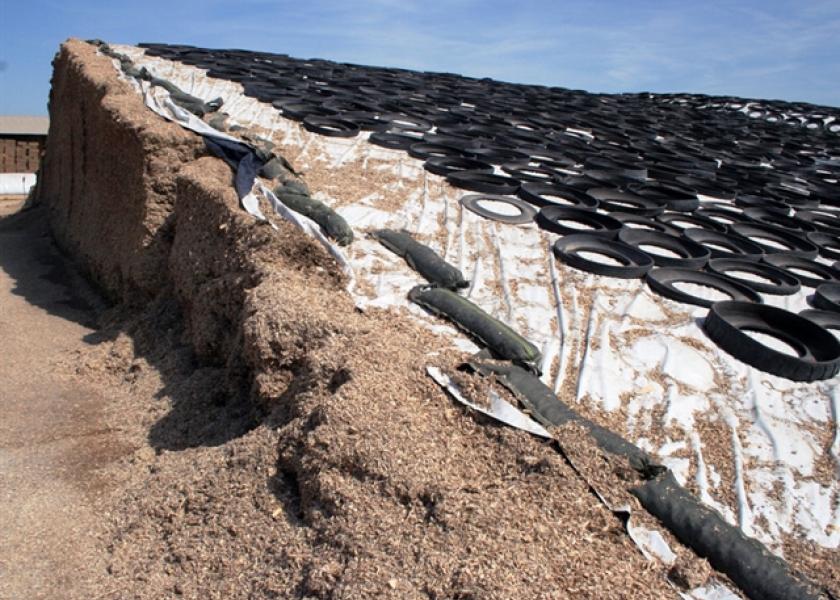Re-Think Silage Shrink

When dairy producers think of silage shrink, they typically mean the difference between the tons of fresh forage harvested and the tons of ensiled forage actually fed.
Federal and state agencies are becoming concerned enough with the environmental impacts of farming practices that they have begun regulating silage production (mainly in California) to mitigate losses that may affect air and water quality. The government agencies have been most concerned with volatile compounds
 |
| RICK LUNDQUIST, of Lundquist & Associates and Nutrition Professionals, is based in Duluth, Minn. |
escaping from the silage face, which may impact air quality.
Peter Robinson, an Extension dairy specialist at the University of California, Davis, studied silage shrink on four dairies using eight corn silage piles (two rollover, one bunker, five wedge) with 1,000- to 13,000-ton capacities.
The silage piles were covered within 48 hours with oxygen barrier film and black/white plastic, weighted with tire chains and fed out by professional crews using electronic silage tracking systems.
Average total wet weight shrink (the amount of fresh forage over the scales minus the amount actually fed) was 8.4%, which is similar to many commercial estimates. Dry matter (DM) shrink was 6.8% as determined by oven drying the samples.
However, actual DM losses were only 2.8% after the weight of volatile carbon compounds driven off during the oven drying process were added back. As these volatiles (e.g., acetic, propionic and butyric acids plus ethanol) are actually captured in the fermented silage and fed out, oven drying the silage to create a “DM” loss overestimates real nutrient loss. This means most wet weight shrink is water.
California regulatory agencies are concerned with volatile carbon losses, especially from the
exposed silage face. However, Robinson reports most of the face losses were water, and actual DM (and volatile carbon compound) losses from the face were near zero.
Overall, it looks like these dairy farmers, using standard best management practices, did a pretty good job of preserving the nutrients in the whole corn crop as silage fed to their cows. Isn’t that the whole point of making corn silage?







